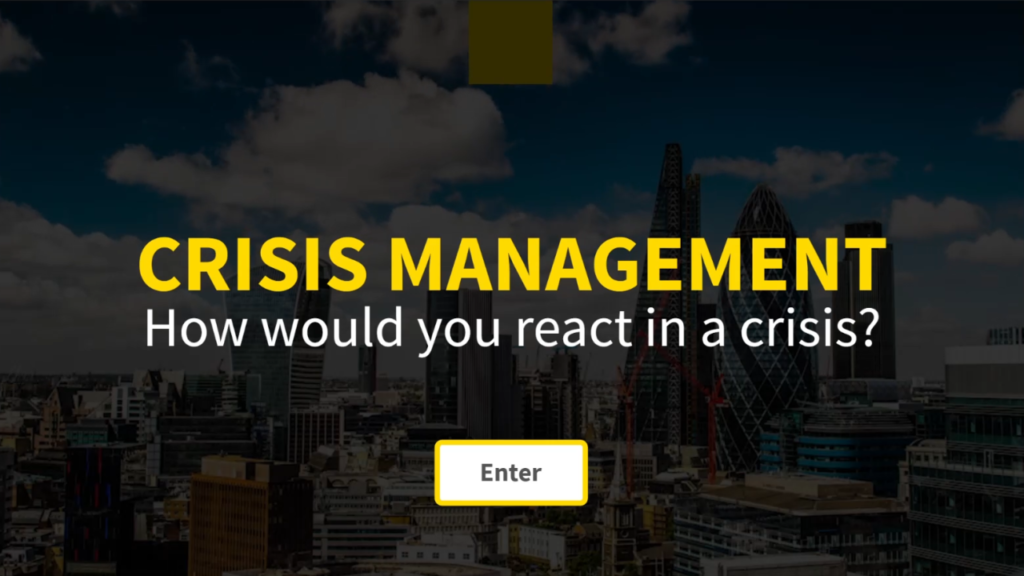The global drive for workplace efficiency has placed new demands on businesses and employees. Whilst firms expect individuals to deliver a high-quality performance, employees expect on-the-job e-learning programs that enable them to develop quickly. New-generation technologies have played a part in this paradigm shift. Researchers at Warwick University found that Virtual Reality (VR) simulations are the future of learning.
People learn quicker through experience. VR technologies provide an immersive experience in which designers are able to recreate real-life situations and environments. Scenario-based training is, therefore, more engaging, and enhances memory recall. Training programs that are real and relevant to the role expected of employees, VR has the potential to bring employees up to speed for less time and less cost.
What is Scenario Training?
Scenario training takes advantage of virtual reality simulations. In VR environments, users feel they are actually experiencing what they see, hear, feel and touch. The only difference between real-life training and VR training is that virtual simulations provide a secure environment for trainees to make a mistake without any consequences.
When people know it is alright to make mistakes, they feel less pressure. As a result, cognitive function is heightened and they learn more quickly. VR simulations are highly advantageous for jobs that expose individuals to dangerous environments such as mining, oil rigs, construction, surgeons and the military. Scenario training can also provide instant feedback and facilitate effective learning techniques. Plus you can reimagine any scenario and test employees on their decision-making skills, communication, leadership, problem-solving, and ability to follow instructions.
Learn On-The-Job Skills
The most obvious use for scenario-based training is in industries that require specialist skills and knowledge. VR has already taken off in the healthcare profession and is growing in popularity among pilots, engineers and construction workers.
Scenario training can also include interactive feedback boxes which help to set up objectives and guide users through the training program. Technology is also a superior tool for collecting performance data which gives trainers more insight and enables them to provide detailed feedback.
Improve Communication and Confidence
Communication plays an important role on a number of levels in both your professional and personal life. Good communication facilitates trust and increases retention. A report published by McKinsey showed that when teams communicate effectively, they increased productivity by as much as 25%. Good communication is also known to increase sales.
For sales staff and customer support teams, communication skills training can help employees navigate interactions they can expect to experience as part of their job. Managers and mentors can also benefit from scenario-based training. VR simulations not only enhance the learning experience of users but also gives senior executives the ability to assess future leaders.
Leadership is a skill that is best learned through experience. Decision-makers also need to practice crisis management, providing effective guidance to team members, setting a good example, and critical thinking when under pressure.
Build The Bigger Picture
Scenario training gives users an opportunity to see the consequences of their actions. Having a safe environment to make mistakes helps to relieve trainees of pressure. But scenario-based training can be taken much further. Because users are immersed in a VR experience, it is an efficient training method that enables users to adapt to situations much more quickly than they would in real-life.
For example, you could create a VR simulation with a focus on team building and bonding. The simulation can demonstrate the consequences of certain actions. A powerful method would be to create a simulation in which a fabricated conflict arises between work colleagues. These scenarios help to build a company culture, but also address the nature of your employees. How would they react to provocation and how would they resolve conflicts or disputes.
Training programs have various options that enable employees to provide a response. Every response has a corresponding result that reveals the consequences of a particular action.
Compliance Training
Every employee is subjected to some form of compliance training – which every employee finds totally boring. Yet compliance training such as fire drills, ethical and diversity training and more recently, cybersecurity training, provides essential need-to-know information. The main issue employees have with compliance training is they feel pointless – despite the devastating consequences of relevant scenarios. Engagement subsequently dwindles. VR simulations, gamification or interactive animated videos provide an effective solution to increase engagement – and thus attention and retention.
Wrap Up
Talking advantage of VR technologies to create scenario-based training saves time and money getting trainees up to speed. And scenario training simulation can be designed for every situation you can think of.
Do you need to develop scenario based e-learning either via Articulate Storyline, Augmented Reality or Virtual Reality? Why not drop us an email at info@sbanimation.com, or give us a call on +44 (0)207 148 0526. We would be happy to help. For further reading see our case study VR Employee Training, by clicking here.











